Hog Butchering with Family and Friends

Pennsylvania has been having some chilly weather this winter. A few weeks ago, the lows were in the single digits and the highs were only in the teens! While many people grimace at the thought of frigid temperatures, these are exactly what are needed when butchering at home.
My father, Mark, has written a few articles describing his memories of butchering on the Hagenbuch farm in Montour County, PA where he grew up. In one of my favorite pieces, he discussed the process of butchering hogs while showing pictures of him as a boy helping out the adults. Other photographs in the article captured his cousins, Myron Cromis (b. 1918) and Harold Sechler (b. 1923), at work on several hogs. Wintertime butchering was, and still is, a necessary activity that provided food and fellowship for family, friends, and neighbors.
Unlike my father, I was not raised on a farm. However, I was lucky enough to have family that butchered chickens, ducks, and hogs at various times over the years. The last butchering I attended was in early January of 2001. My dad described that particular day in one of his previous articles:
In 2001, we made arrangements to butcher two hogs with Dale and Lamar Rathmell who were members of my father-in-law’s (Reverend Roy A. Gutshall) congregation at Delaware Run Lutheran Church near Dewart, Pennsylvania. My wife Linda and our three children showed up at their farm very early on a January morning, and I got to relive the butchering days of my youth.
My children remember the smells, cold, and hard work of that day—especially my son Andrew and his accompanying friend Nathan Hoover, both of whom were about 20 years old. We did all the tasks associated with butchering: scalding, scraping, cutting lard and bacon, boiling the cracklins, and making puddin’ and scrapple.
While we worked, I commented to the Rathmell brothers that they sure had good equipment to work with. They told me that they had purchased all the equipment from a fellow near Limestoneville whose cousin had been a master butcher and had died a few years before. The seller’s name was Dad’s first cousin, Harold Sechler; and the master butcher was none other than cousin Myron Cromis. Most likely the butchering equipment I was using that day was the same equipment that had been used on our farm in Montour County in the 1950s and 60s. History comes full circle!

Linda (Gutshall) Hagenbuch, on the left, and Andy Bomboy, in the center, prepare the ground pork that will soon be piped into sausage cases.
In 2001, I was in college and had been studying photography for a few years. On the day of the butchering, I brought along my camera and a roll of film to document the process. Unfortunately, those images went missing for several decades. Then, a few weeks ago, I found them while sorting through a box of old papers.
I recall that the day was cold, perhaps in the 20s, and that there was snow on the ground. My good friend, Nathan Hoover, remembers riding with us—Dad, Mom, my sisters, and myself—in my dad’s new Ford truck. There was enough snow on the roads that my dad was able to use his four-wheel drive for the first time!
Once at the Rathmells’ house, we headed to a large, block wall building with high ceilings. It had two large sliding doors and a gravel floor—the kind you don’t need to clean when you make a mess. There were a number of long tables, plenty of knives, a few large kettles, and other butchering equipment.
I believe my maternal grandfather, Roy A. Gutshall Jr. (b. 1920), stopped in briefly to see the operation. He did plenty of butchering in his day. Since the building was unheated, some people didn’t hang around too long. I remember my sisters heading into the house to warm up and help with lunch.
Looking at the pictures now, I can see there were many more people there than I thought. Several of them we cannot even identify. Of course, it makes sense that there would be a large group helping. Hog butchering is time intensive and takes an entire day to complete, depending upon the number of pigs to be processed.
The hogs arrived in a trailer and everyone sprang into action. My father’s account of the day mentioned that two hogs were butchered. The photos actually reveal a total of four hanging in the building. Each hog was shot with a .22, and its throat cut so it could bleed out.
One by one, the hogs were lifted into a trough filled with hot water. This helped to loosen the hair on its skin. Chains under the pig were used to roll the carcass in the water and allowed every side to be scraped clean of hair. Hog scrapers are a unique tool, and my father has one that was owned by his maternal grandfather, Odis Guy Faus (b. 1899).
Next, the hogs were each carried into the block wall building. Meat hooks, on either side of a length of wood, pierced the the pigs’ back feet. This device separated the legs and permitted the carcass to be hoisted up using a chain and pulley.
Once hung, the head and internal organs were removed. These were dropped into a large metal basin located under the carcass. Leaf fat and organs, such the liver and heart, were set aside. Looking at the below image, I can see that the pork livers were separated from the other organs and washed. While these could have been made into a puddin’, it seem likely they were frozen and eaten as is.
The cleaned carcasses were cut in half and butchered into various cuts of meat: hams, ribs, loins, bellies, chops, shoulders, and more. These were placed on tables where people trimmed away excess fat and skin. Little went to waste. Small pieces of meat were kept and used to make ground pork, puddin’, and scrapple.
The ground pork was seasoned and piped into sausage casings. Traditionally, the casings were made from cleaned intestines, although I believe we used store bought ones in 2001. Other pieces of meat and edible organs were boiled with seasonings in a large kettle. The meat from this was dipped out of the broth to create puddin’.
The remaining broth was used for scrapple. Cornmeal and buckwheat were added to the broth, and it thickened into a porridge. This was dipped into pans so it could set into scrapple. I remember making scrapple that day. Unfortunately, I didn’t take any pictures of it.
Another kettle was for cooking cracklins. Pieces of fatty hog skin were heated in a kettle until the fat liquefied and deep fried the skin. The crispy skin was dipped out of the kettle and put into a press to squeeze out the fat. The liquid fat from the press and the kettle was placed into containers, cooled, and saved as lard. The crunchy cracklins were put into paper bags.
After a long day of butchering , I recall my family bringing home plenty of meat, along with a tub of lard and a bag full of cracklins. The latter two items really stick in my memory. One reason that might be is the lard made the best homemade french fries!
Hog butchering is dirty, time-intensive work that is typically done in the frigid, midwinter season. It’s an activity that provided our earliest Hagenbuch ancestors with food and fellowship. Today, we simply visit the supermarket with its huge selection of pork roasts, bacon, sausage, and other meats. Hogs are still being butchered, albeit out of sight and by somebody else. For this reason, it is important that we know where our food comes from and experience what our relatives once did on the farm.

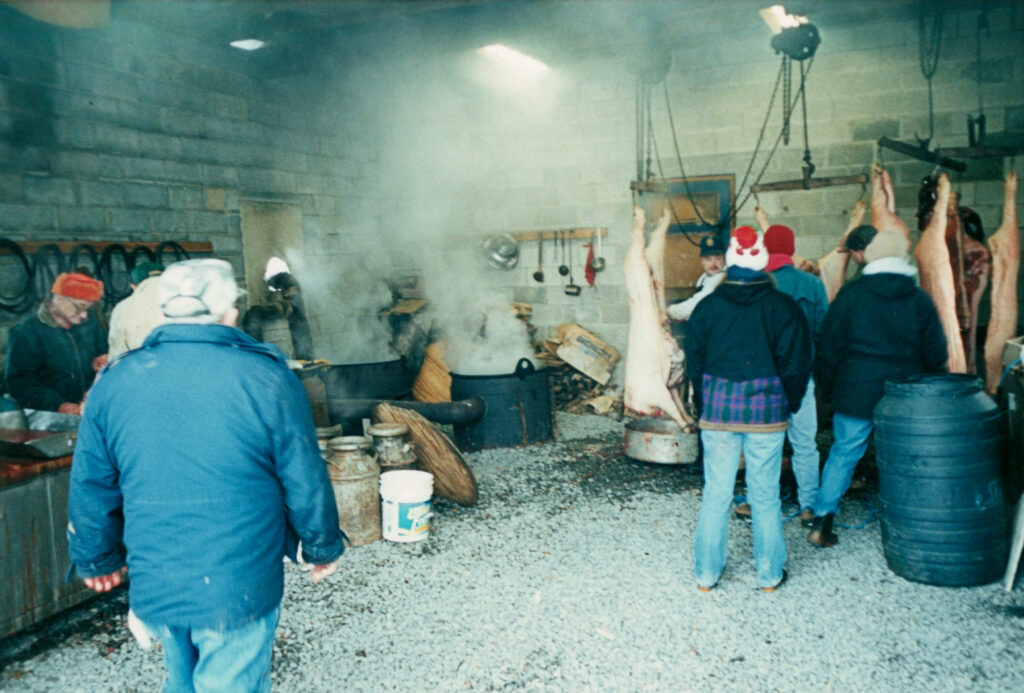
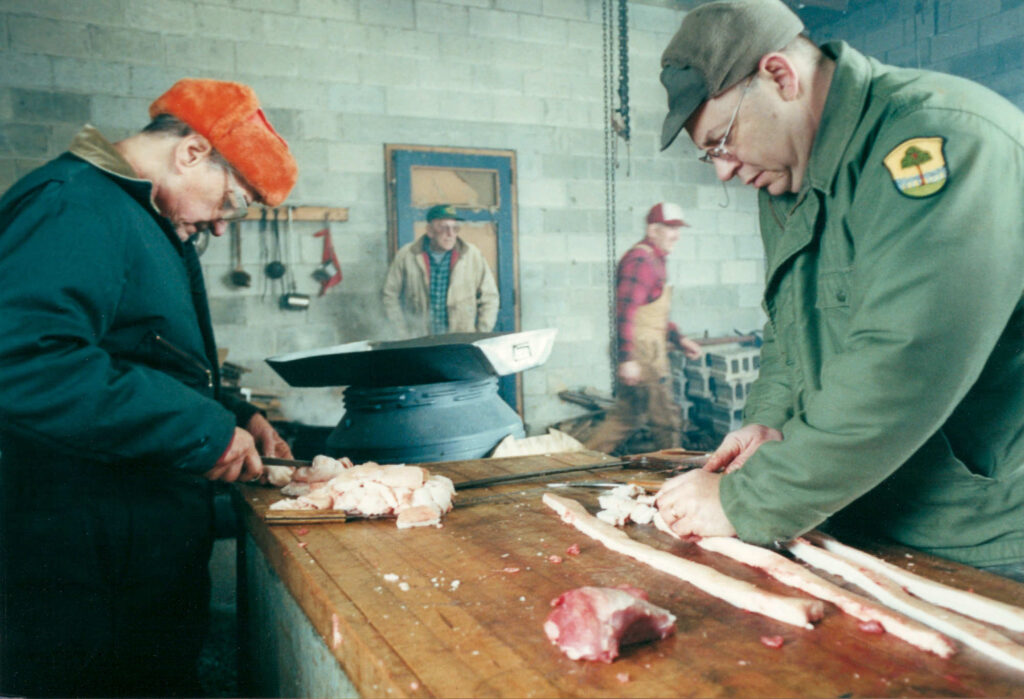
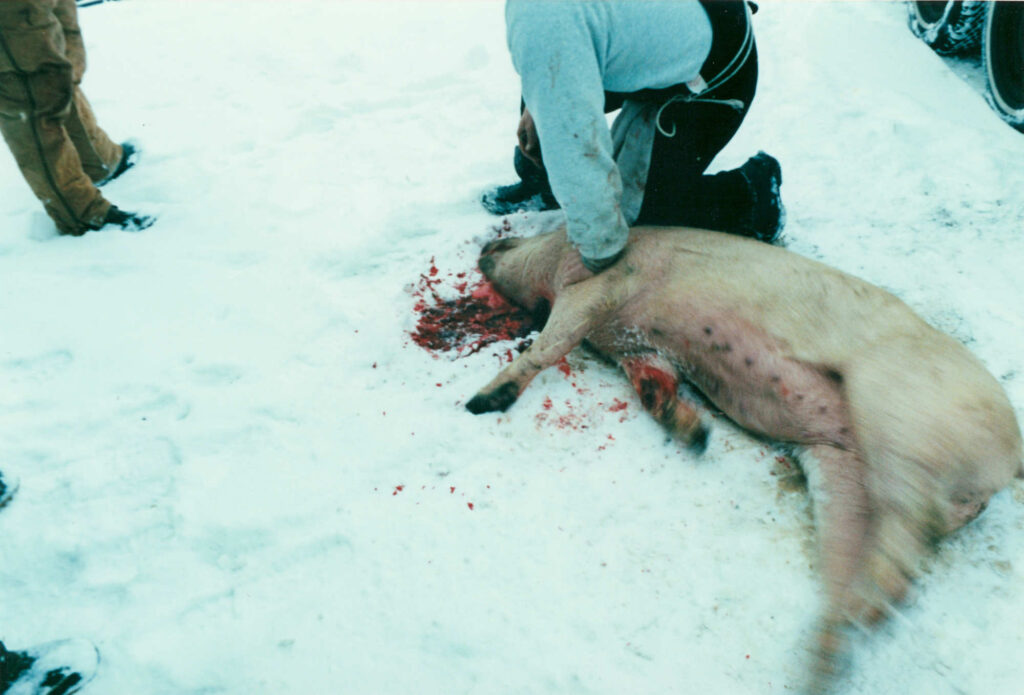
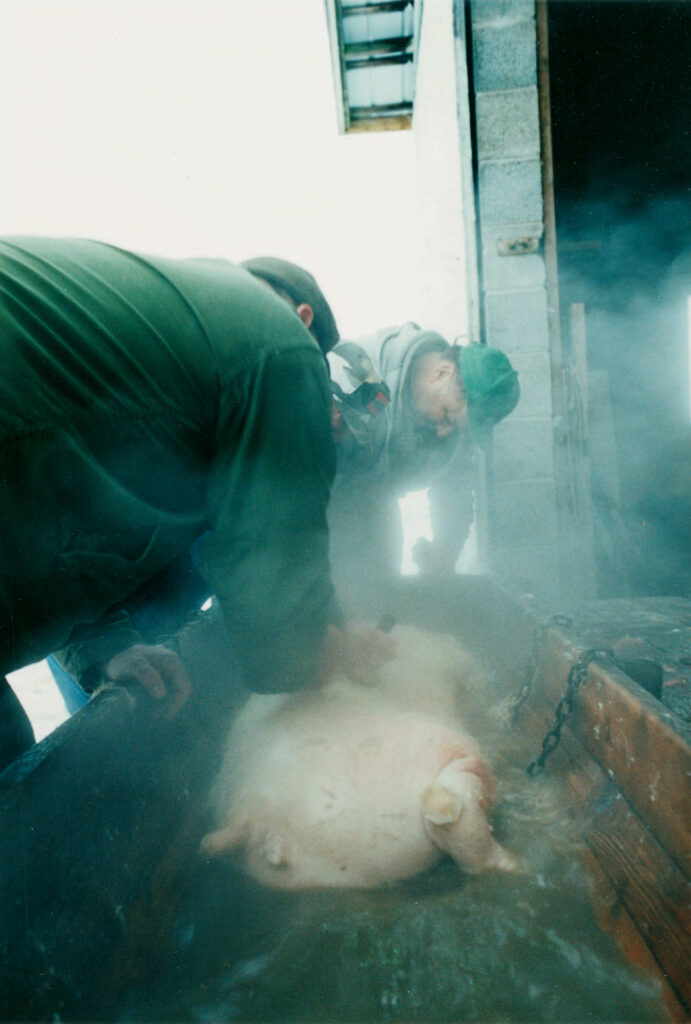
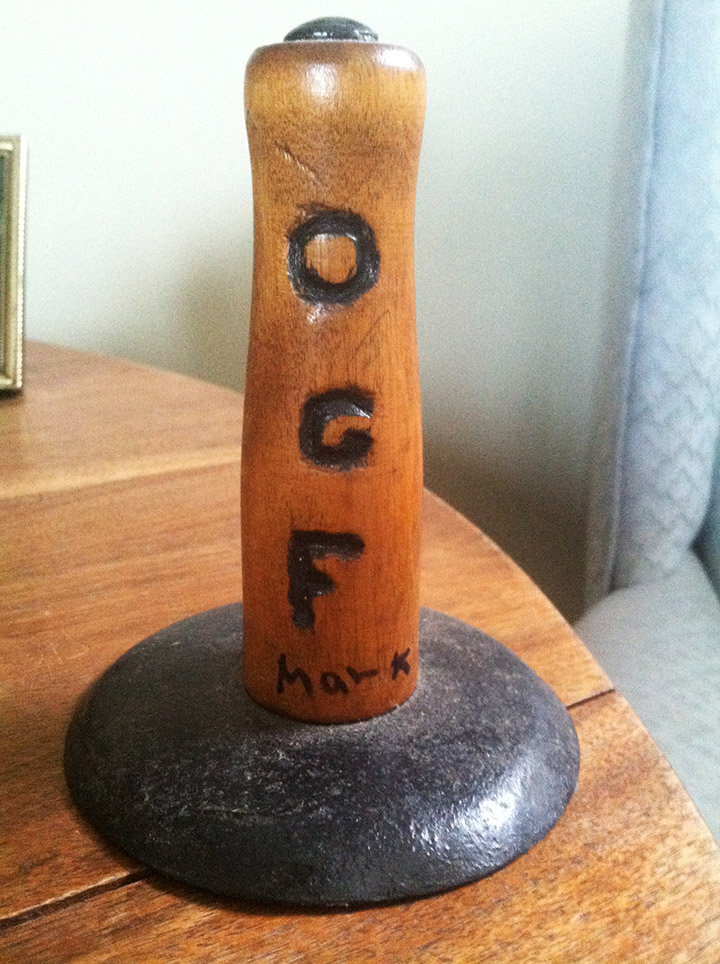
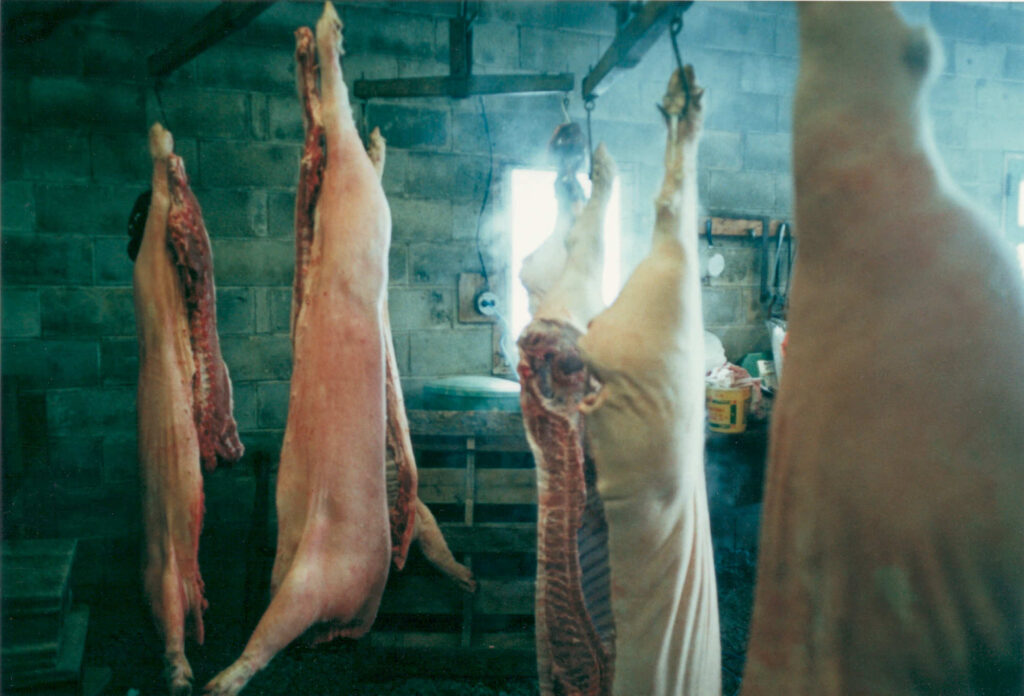
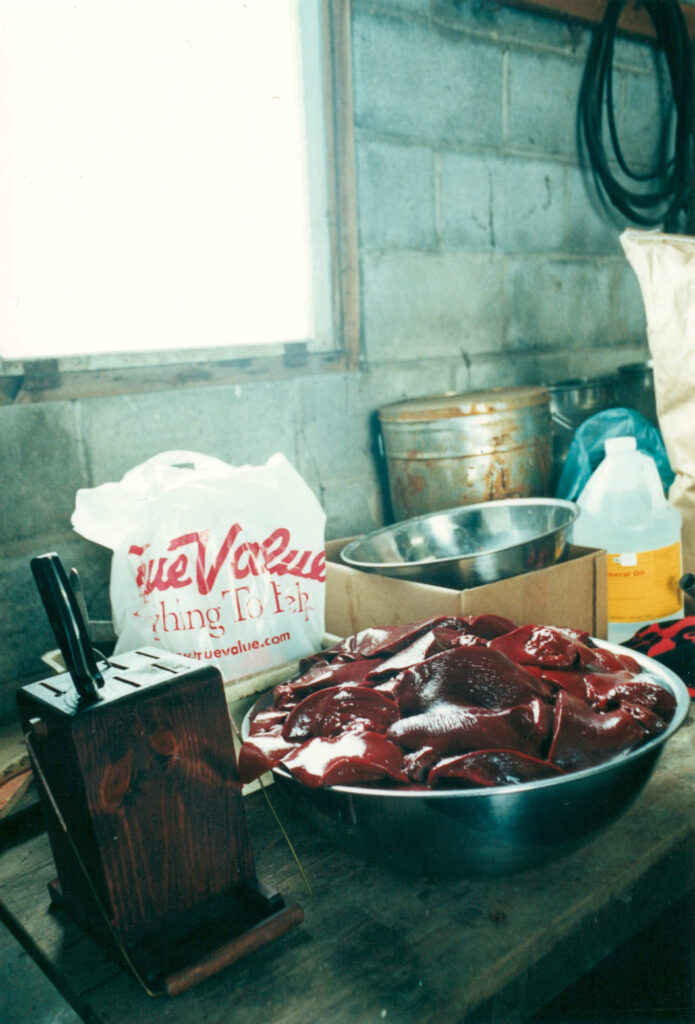
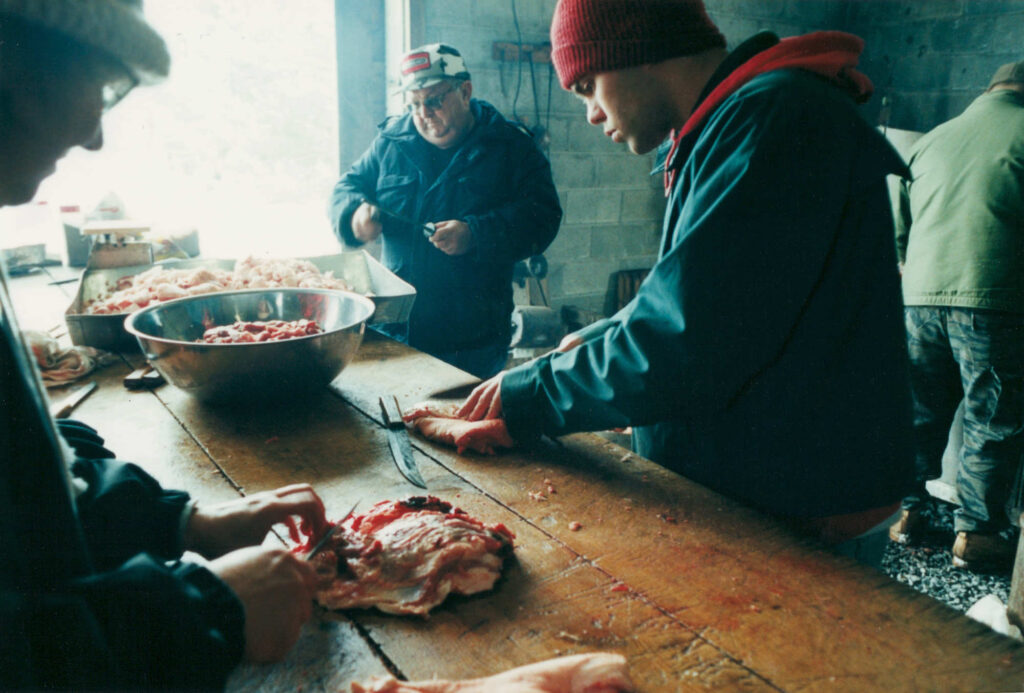
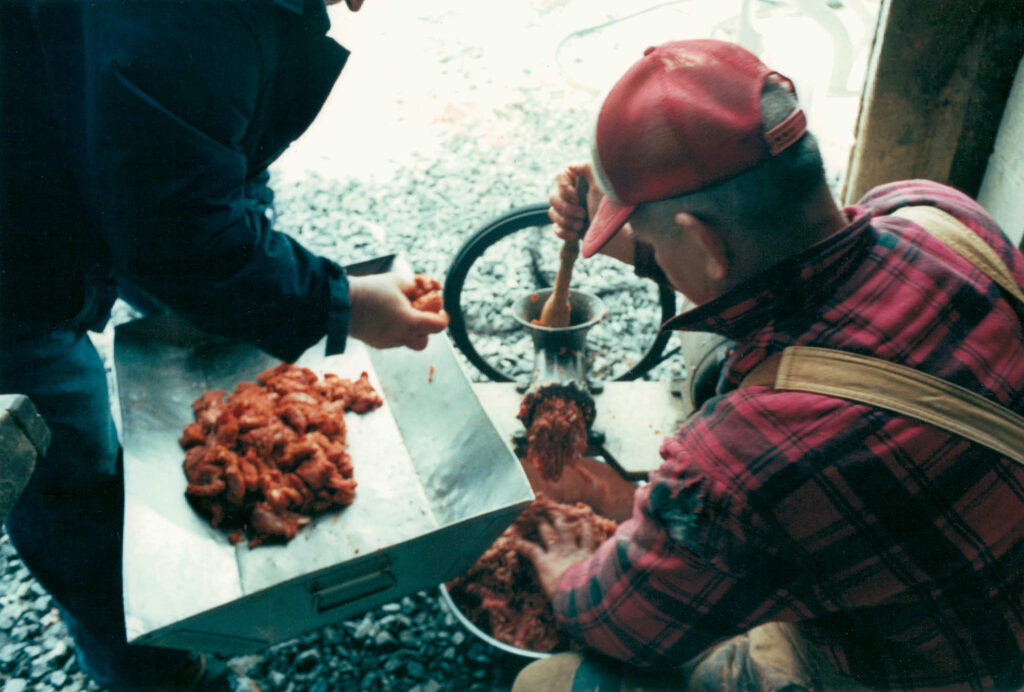
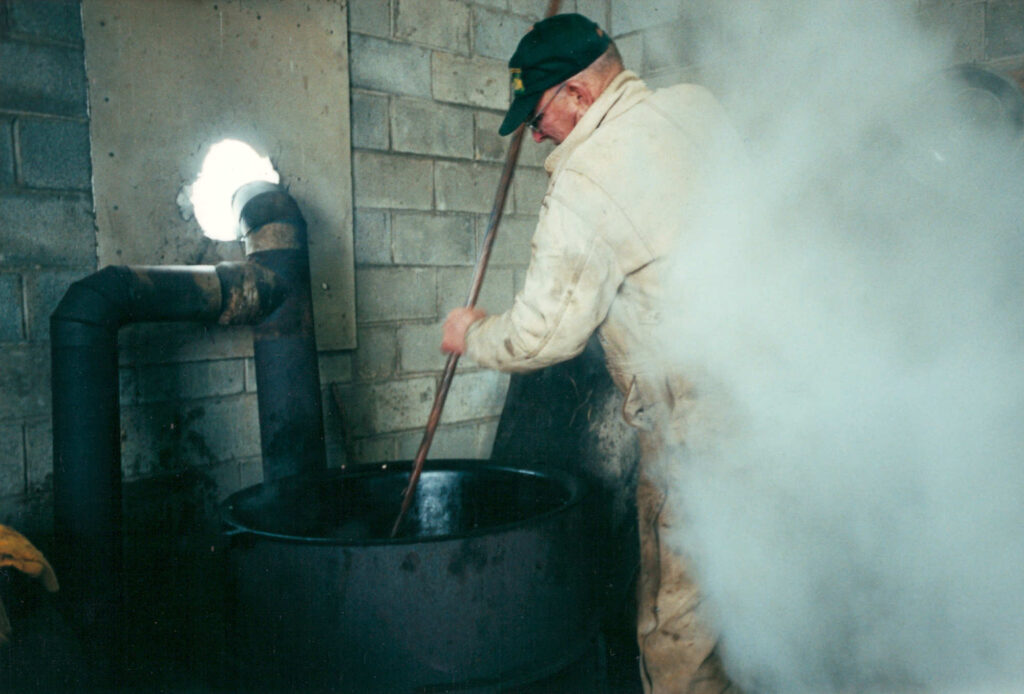
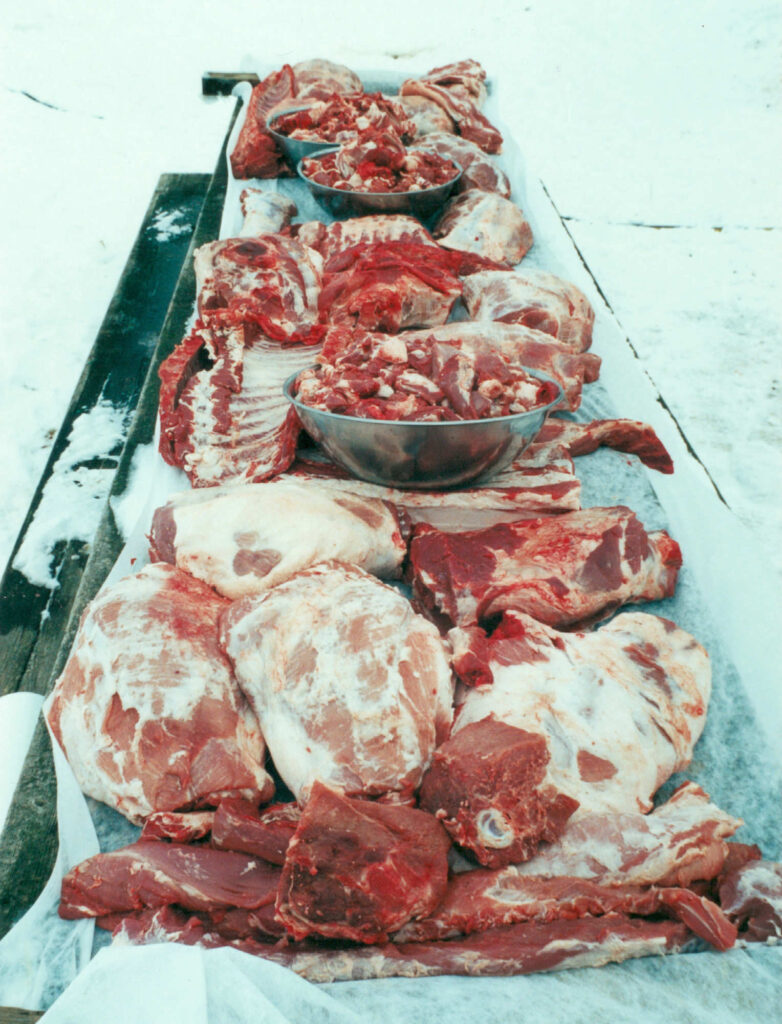
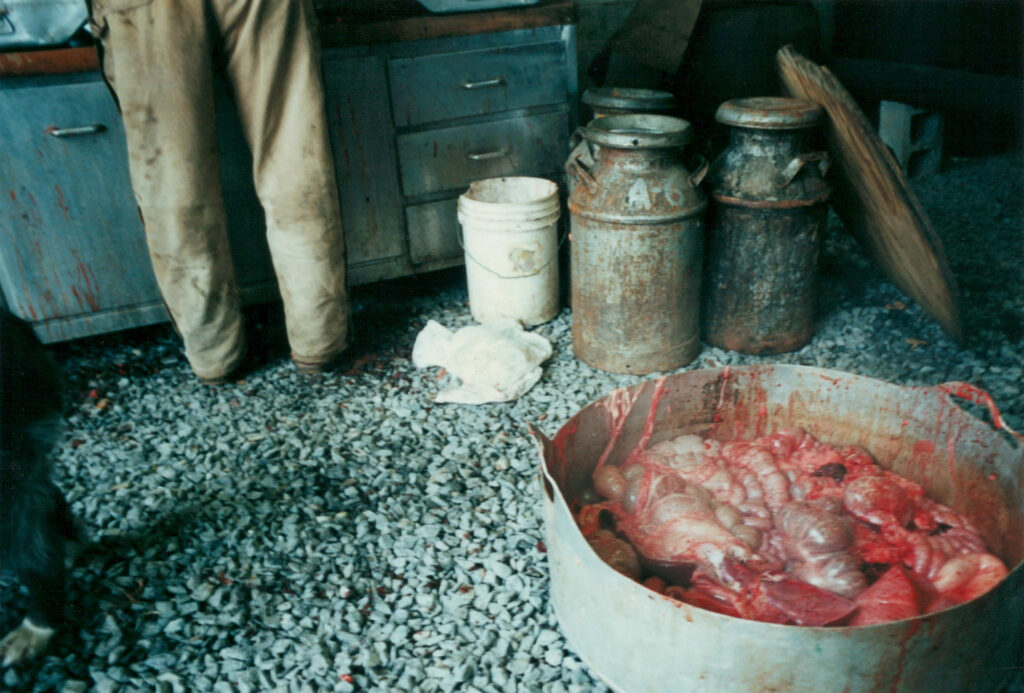
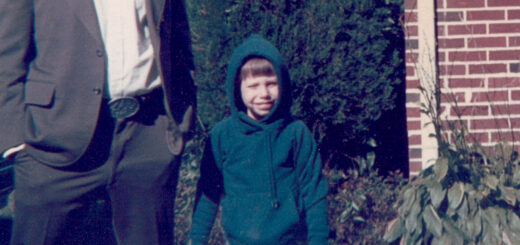
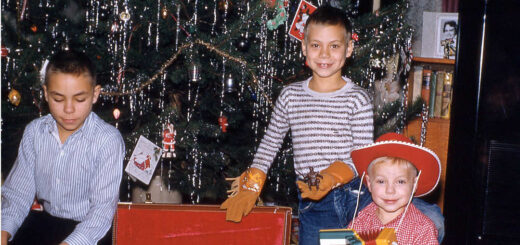
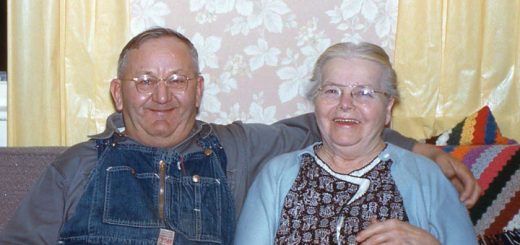







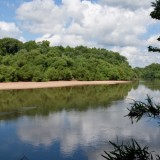

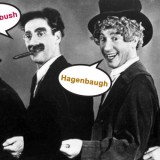


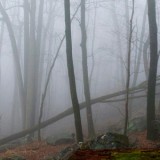

Great article. Yesterday I found a picture of my great grandfather Rutter J. Hagenbuch showing two of his hogs to my father when my father was maybe three or four years old. I am not sure if Rutter directly butchered the hogs or instead had that activity outsourced.
Hi Kirk. I’d love to see the picture sometime. You are correct: Not all families butchered, even if they would raise hogs. I would say, however, if Rutter had a farm he probably did his own butchering with family and neighbors. Always great to hear from you!
My main memory from that day is how cold it was. I hung out in a breezeway trying to warm up but it didn’t help much. If I would’ve helped with the butchering, I probably would’ve been warmer. Fun fact – I became a vegetarian a little over a year later!
Wanted to also say how great these photos are. It’s so special that you have them.
Thanks, Julie! I appreciate that. Looking at the pictures jogged my memory as I had forgotten a lot about it 🙂
I “helped” Myron and Harold after school on butchering days (every Tue during butchering season). I rode a differdnt bus to their farm, which caused quite a stir with the neighbor’s. Myron and Harold were bachelor’s. They received a call from the father of the 2 neighboring farm girls that I had sat with on the bus about “who was the girl that rode the bus?” My job was to get the customers ordered item and take their payment. There were meticulously hand written order books. My payment was a heaping full pie pan of pudding meat and time to do homework. A few years ago, after Harold died, the “2 neighbor girls from the bus”, who are now friends, asked me if I wanted the sign that hung in the butchering shed that had all the 1978/1979 prices. It now hangs in my house. 4.5 ft by 3.5 ft. Handwritten I presume by Harold Sechler.
In the late fall and winter, my Grandfather, Clyde Marr and his neighbor, Raymond Miller butchered together. They would travel from farm to farm to butcher hogs. They would take almost everything that they needed to butcher along with them, except for firewood for their fires under kettles. The farmer would provide that and also extra help. After a really cold and snowy winter, they both built a butcher house on their farms and parted ways.
Once grandpa had his own butcher house, he would either pick up the hogs the night before and put them in his pigpen or butcher the hogs that he raised on his farm. as I was growing up, I can remember in the mornings, going out to the pigpen and watching and helping him shoot the hogs and then bleed them out. He had a 3 point lift that attached to his Ford 2000 tractor, he would back up to the pigpen and attach a hook to a tendon on the hog’s back leg and then the hog would be lifted up high enough not to drag on the ground. The tractor would go to the butcher house and then put on the platform of the scalding trough, once the hair was removed, then the hog was lifted up and gutted and split into to and the butchering would continue.
Almost all the time, there were the same three men who helped my grandfather butcher. They were Zender Young, Elwood Cotner and Myron Cromis. After my grandfather quit butchering Myron Cromis built his own butcher shop and butchered at his farm for many years.